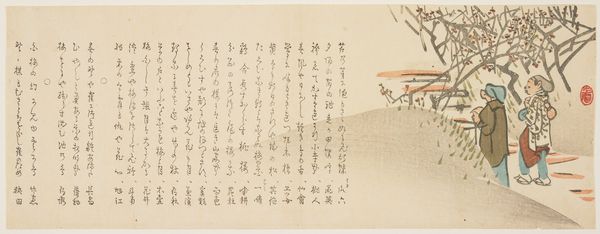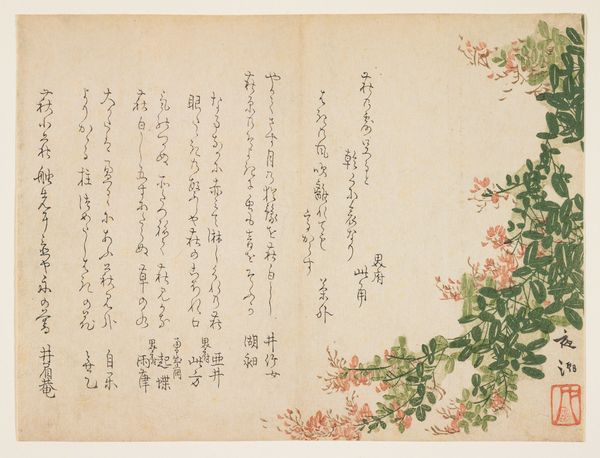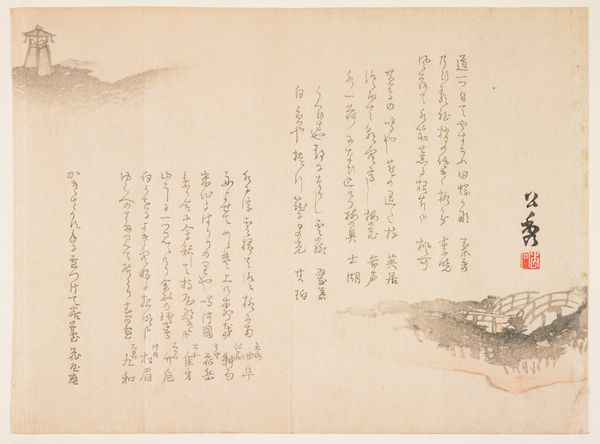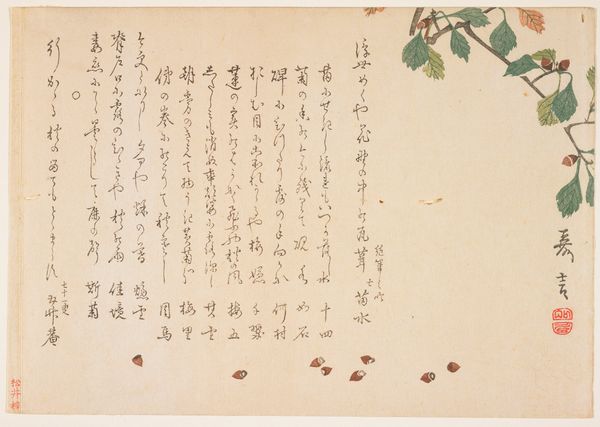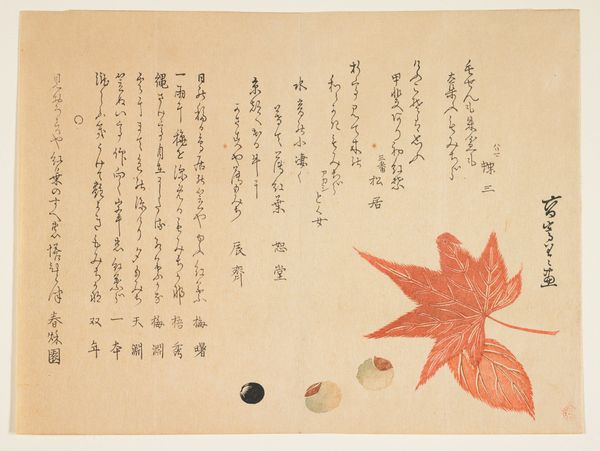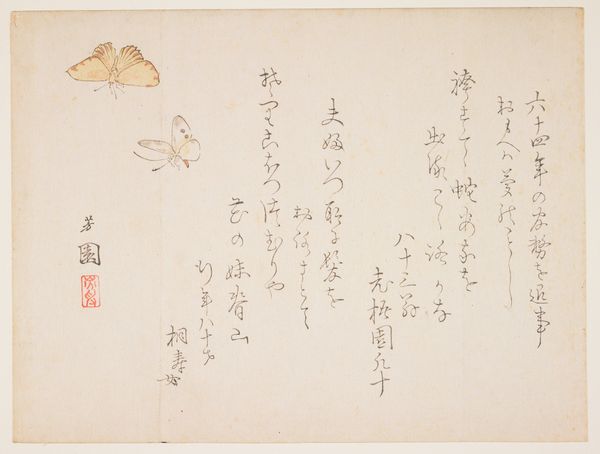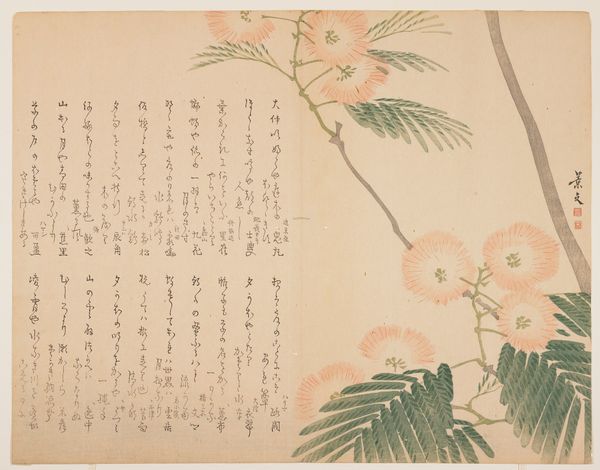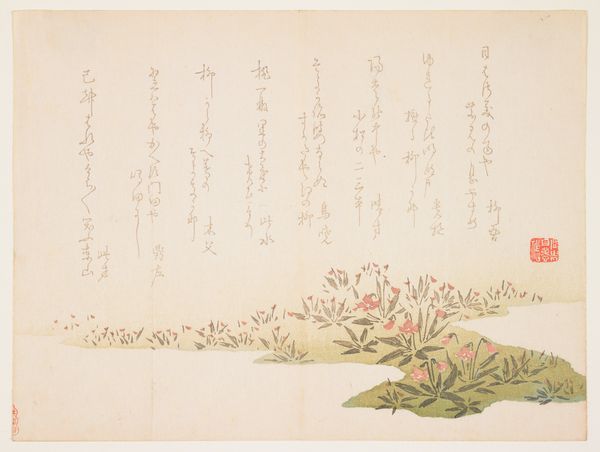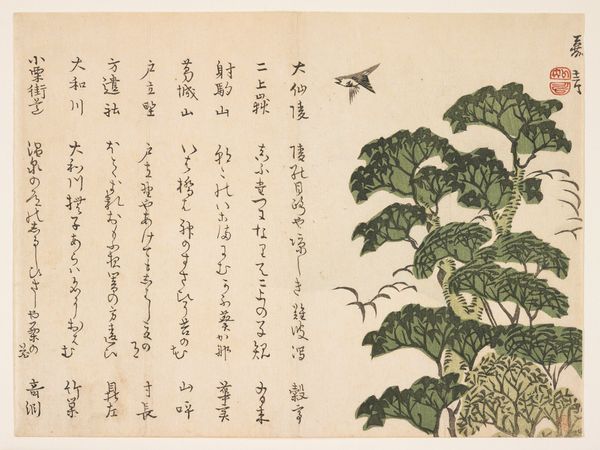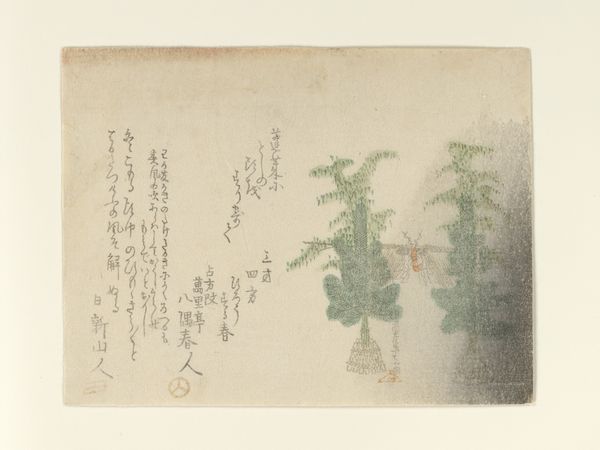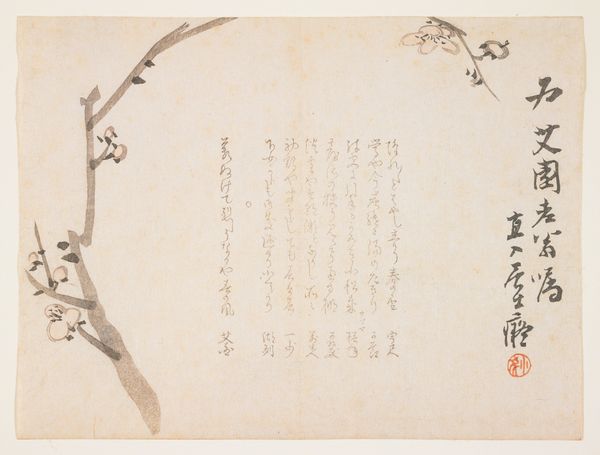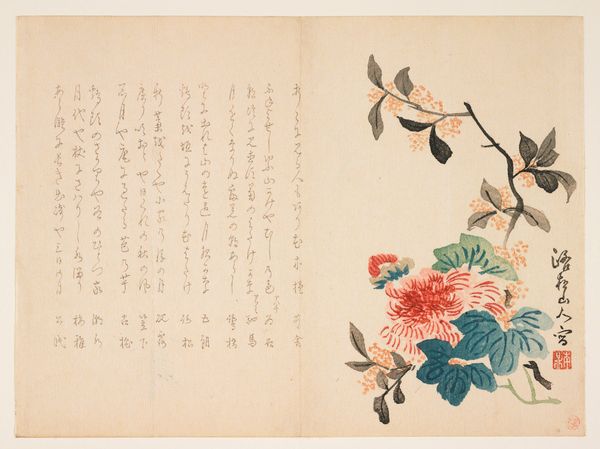
print, ink, color-on-paper
#
toned paper
#
light pencil work
#
water colours
#
ink painting
#
ink paper printed
# print
#
etching
#
japan
#
ink
#
color-on-paper
#
ink drawing experimentation
#
watercolour bleed
#
watercolour illustration
#
watercolor
Dimensions: 4 11/16 x 6 1/4 in. (11.9 x 15.9 cm) (sheet)14 x 17 15/16 in. (35.5 x 45.5 cm) (mat)
Copyright: Public Domain
Editor: We're looking at "(Pine trees on a hill)" by Kawamura Bumpo, created in 1861. It's an ink and watercolor print. I find the subdued color palette creates a sense of tranquility, yet the stark, almost graphic, quality of the pine tree is striking. What sociopolitical elements do you notice within the artwork? Curator: I think the quietness of this print can be deceptive. Consider the time it was made, the late Edo period. Japan was on the brink of immense change, pressured to open up after centuries of self-imposed isolation. The pine, a symbol of steadfastness and longevity, rendered with such clear definition, feels like a quiet assertion of Japanese identity. Editor: That's a great point. It's like the artist is clinging to a national symbol during a time of uncertainty. So, the choice of subject is less about nature, and more about resistance? Curator: I wouldn’t frame it as outright resistance, but rather a claiming of cultural space. The traditional art forms themselves become a way of negotiating encroaching Western influence. Also consider the role of art education at this time; artists like Bumpo were often educators. What kind of message do you think he was communicating to his students? Editor: Maybe a reminder of what defined them as Japanese artists, encouraging them to innovate while remaining rooted in their traditions. So, it is not enough to appreciate the visual aspects of the print. Understanding the historical, cultural, and even philosophical contexts becomes crucial to seeing it as more than just a landscape. Curator: Precisely. By intertwining art historical analysis with cultural awareness, we move towards a more comprehensive understanding of artworks, situating them within complex historical and social power dynamics. I hope our talk can allow people to rethink of Japan through art. Editor: Definitely. Thinking about the print as a cultural statement rather than just a pretty picture really opens up a new level of understanding for me.
Comments
No comments
Be the first to comment and join the conversation on the ultimate creative platform.
